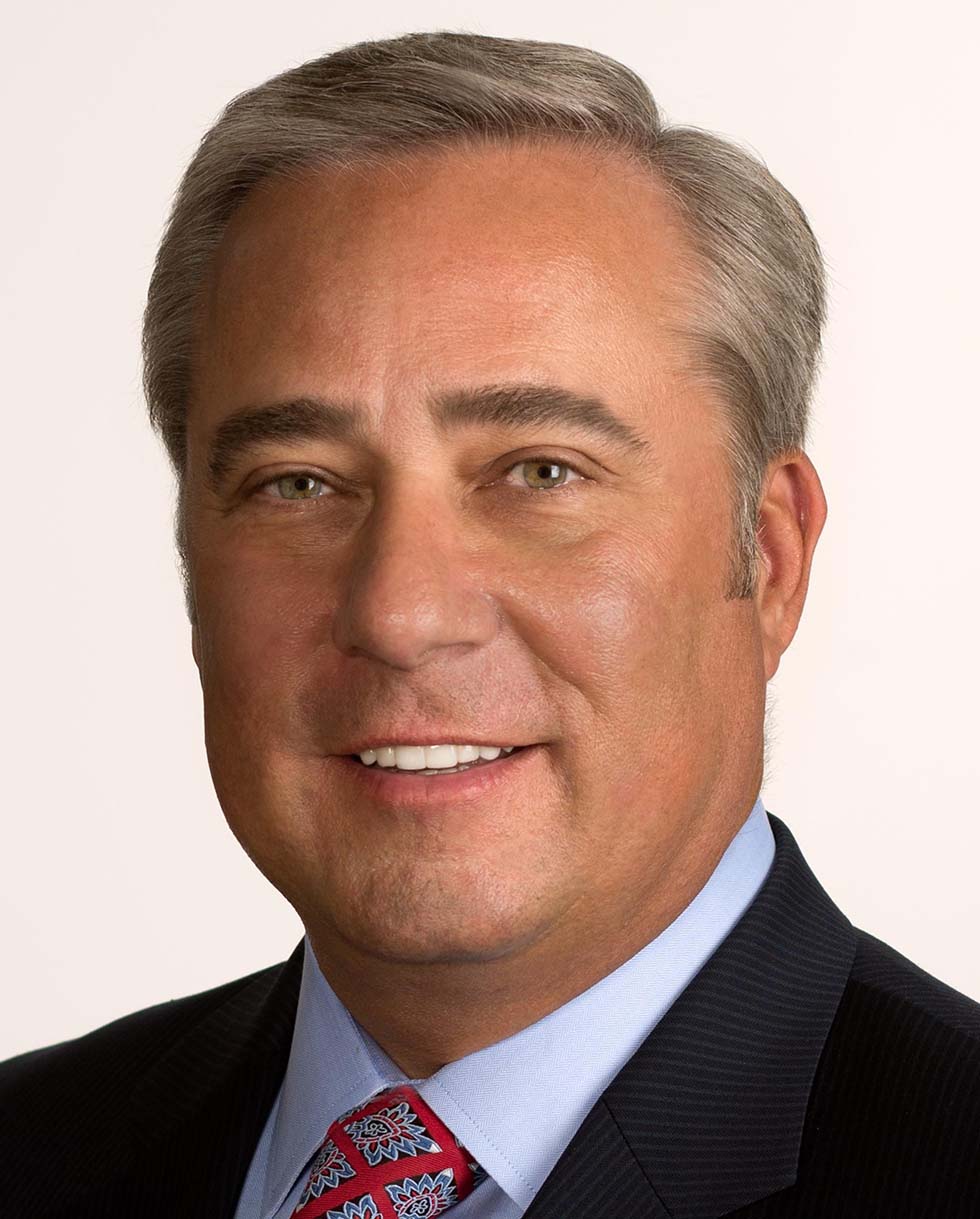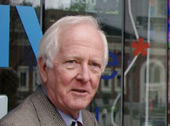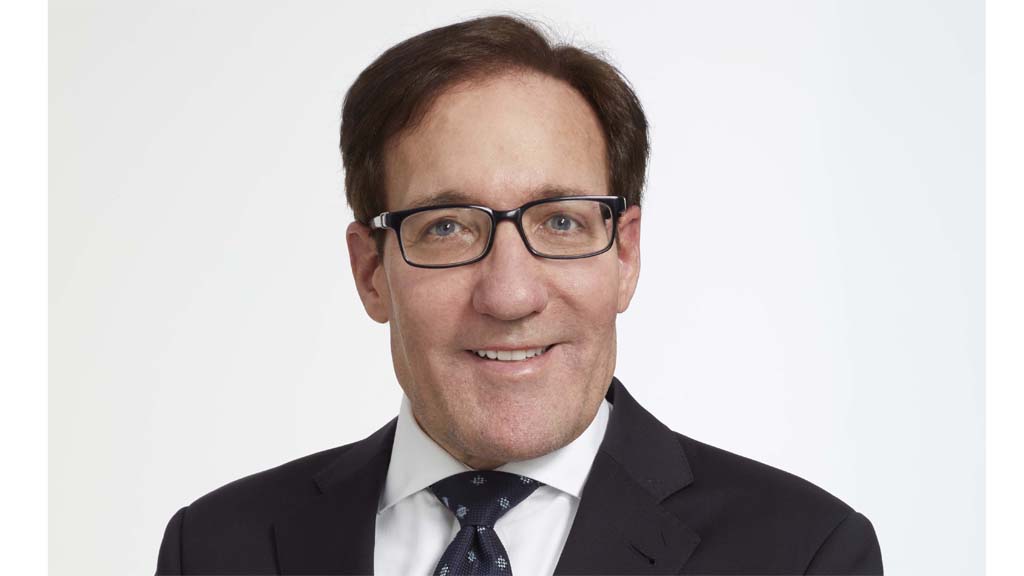Broadcasters Show Unexpected Fiscal Strength Against Headwinds
Industry proves remarkably resilient for an odd-numbered year

Notwithstanding ongoing tariff-related economic uncertainty, tv broadcasters were finding a lot about what was happening at the midway point in 2025 to justify surprisingly optimistic commentary about their near- and long-term prospects.
Of course, with the tariff threat escalating in mid-July, there was no way to count on the first half of the year as an indicator of what’s in store for the larger economy. But at least industry results to date were cause for relief compared to what might have been.
Exceeding Expectations
While TV station and network owners attested to an overall softness in the local ad market stemming from the tariff situation, outlooks for the rest of the year were buoyed by results exceeding expectations, including the fact that year-over-year ad revenue declines were relatively mild in the 5-10+ percent range, which improved on the usual fluctuations following a national election year.

Addressing analysts in May, major TV station groups predicted continuing gains from technology-driven cost efficiencies, expanded local news coverage through digital outlets, the return of many major sports teams to local OTA distribution, and a strong pace in distribution contract renewals. In comments typifying the industry state of mind, E. W. Scripps president and CEO Adam Symson touted an outlook based on Q1 results that “beat expectations across the board due to strength in networks revenue, especially for connected TV, and due to strong expense control across the enterprise.”
On Sinclair’s May Q1 conference call, president and CEO Chris Ripley noted that “Sinclair delivered solid financial results in a challenging environment,” reflected by the fact that “adjusted EBITDA exceeded the high end of our range guidance.” Confirming Ripley’s description of Sinclair’s core advertising trends as “among the best in the industry,” Sinclair executive vice president and CFO Lucy Rutishauser said Q2 would see local ad revenue tracking “lower by approximately 2 percent at the midpoint of our guidance range.”
Projecting the pace beyond Q2 is hard, she added. “We believe the current macroeconomic and tariff-related uncertainty is causing our advertisers in several key categories to have significantly reduced visibility and is therefore driving a wide range of potential outcomes in the second half of the year,” Rutishauser said. “In fact, several of those advertisers have pulled their own financial guidance.”
On the brighter side, she noted, “distribution revenues are expected to be 1% higher year over year as we begin to cycle through some of the larger distribution renewals from a year ago.“
The professional video industry's #1 source for news, trends and product and tech information. Sign up below.
And “sports on broadcast have seen record highs,” added Rob Weisbord, Sinclair chief operating officer and president of Local Media. “So even with the economic times’ uncertainty, what we know for certain is that there is a demand for top-tier sports.”
Looking at the tariff situation, Nexstar Chairman and CEO Perry Sook contends, at least in Nexstar’s case, there’s little cause for concern. As to whether tariffs might result in ad sales “falling off the cliff,” Sook says, “The answer is no.” While uncertainties might be causing some hesitation in ad buys among auto makers and other sellers of goods that could face higher tariffs, “only about 40 percent of our non-political ad revenue is tied to goods-based businesses that could be impacted by tariffs,” he says.

Tegna, in a release describing Q1 performance exceeding expectations, said the results, with just a 5% ad revenue drop from the politically charged 2024 ad pace, showed the company’s “resilience despite facing macroeconomic headwinds.” Amid anticipated ongoing softness in the overall local ad market, the growth rate on the digital side was making a big difference, leaving the company “in a strong position to drive profitable digital growth through 2025 and beyond,” Tegna Chief Financial Officer Julie Heskett says.
Conservative Analysts
How all this plays with investors remains to be seen. But Justin Nielson, principal analyst and head of S&P Global Market Intelligence Kagan, suggests a few silver linings in the many clouds overhanging the broadcast TV industry haven’t changed his group’s conservative outlook on the sector’s long-term prospects.
Accounting for election-related ups and downs in ad sales cycles, S&P Kagan projects a 0.5% compound annual growth rate (CAGR) for TV station ad revenue through 2035, with a 1.3% CAGR for core local spot ads and 2.0% CAGR for streamed video and website ads slightly outweighing a 4.1% decline in the national spot CAGR.
These projections account for the many upsides cited by station group executives, Nielson says, including likely consolidation, strong sports schedules, digital content expansion, NextGen TV, and other factors. But in each case, he says, there are trends that appear to set limits on the potential.
For example, as station groups emphasize the work they’ve done to provide their audiences more local news coverage through digital outlets, Nielson says S&P Kagan has seen “a bit of a plateau in terms of what stations are putting on line.” When it comes to winning viewers who stream content to connected TV sets through station streaming services or participation in FAST channels, stations are up against a “lot of competition,” he adds.
A real driver of value in the consolidation opportunity is around local costs.”
— Mike Steib, Tegna
Such hard-nosed reality checks on industry optimism make clear there’s another way to look at things, but, given the volatility intrinsic to every trend line, it’s never been harder to judge where things are going. Beyond TV broadcasters’ take on what’s happening, there’s ample evidence for “the momentum shifting in favor of broadcasters,” as Nexstar President and COO Mike Baird puts it.
One clue in that vein can be found in MoffettNathanson’s newly released Q1 Cord Cutting Monitor, which tracks trends in the pay TV industry with a direct bearing on the broadcast TV segment. Notably, “we’ve now had three consecutive quarters of improvement in the decline rate of traditional Pay TV, co-authors Craig Moffett, Robert Fishman and Michael Nathanson report. “That’s the first time we’ve been able to say that since the decline began.”
At the same time, while virtual MVPDs, including sector leader YouTube TV, Hulu Live TV, Fubo TV, Sling TV and DirecTV Now, are still growing, “collectively they just reported what was by far the worst quarter in the short history of the category,” according to MoffettNathanson. A key but still nascent factor in the trend shifts that could have a growing impact over time is the bundling strategy employed by Charter in the wake of the 2023 agreement with The Walt Disney company, which has made all content from Charter’s programming affiliates available to the MVPD’s subscribers via streaming as well as in linear TV mode.
With Charter set to acquire cable MVPD Cox Communications, the strategy is likely to impact a bigger share of TV viewers, whether or not Comcast and other MVPDs pursue the model, the analysts say. “What all this really points out is the ridiculousness of the current model; some content on linear, some on streaming, with separate subscriptions for both and no way to know in advance which content will be where. It took Charter, a distributor, to save the content providers from themselves,” they add.
One upshot of these new developments is they may invalidate the longstanding assumption that Disney’s decision to make ESPN available as a streaming service “will sound the death knell for linear TV.” Subscribers who want to include ESPN in whatever assembly of streaming services suits their tastes will find it’s “much cheaper to subtribe to a linear package that already includes ESPN. And it will be a whole lot simpler, to boot,” the analysts assert. “A quarter that saw traditionally delivered pay TV —led by Charter—do better, while vMVPD-delivered pay TV did worse, could maybe, just maybe, be the beginning of a trend.”
Regulatory Relief
Near-term considerations aside, the cause repeatedly cited by broadcasters for renewed optimism about the future is their confidence they’ll be getting regulatory relief on ownership caps, ATSC 3.0 spectrum availability and other issues. Nothing looms bigger than expectations the FCC will soon be issuing a new notice of proposed rulemaking (NPRM) on national and local station ownership caps.
“I’d think a NPRM is the most likely way to kick off a revision of rules, local and national, as they relate to ownership,” Perry Sook said during Nexstar’s Q1 call in May. “I’d think that would be one of the first moves chairman [Brendan] Carr would make.”
Optimism about what’s in store in Washington is fueled by the fact that, as noted by Sook—who’s also the current chairman of the NAB’s joint board of directors—“this is the first time in history that the entire board voted unanimously that the national cap elimination and in-market ownership restrictions be eliminated.” It’s certainly “impactful at the regulatory agencies and on Capitol Hill that the industry is speaking in one voice as it relates to this issue.”
Describing what the upsides would be for Gray Media if much-anticipated loosening of station ownership caps are adopted by the FCC, Gray Chairman and CEO Hilton Howell told analysts on the company’s Q1 call, “The consolidation allows us to compete with the really huge tech giants that are actually taking about 80% of the local ad market.” Consolidation, he added, “is an all-in-all positive for the entirety of the broadcast business.”

One of the loudest voices in this choir belongs to Sinclair’s Ripley. “Regulatory optimism remains buoyant with expectations for loosened M&A restrictions and next-gen spectrum relief among other potentially favorable changes that could lead to a strengthening of local journalism,” he says.
Still, beyond the generally upbeat expectations on the ownership front, there are potential flies in the ointment related to FCC responses to NAB-supported station group calls for rules shifting control over retransmission fee negotiations with vMVPDs from broadcast networks to stations—as is the case with how MVPD negotiations are managed. Adding urgency to the matter, the long-running battle between network and station owners on this issue recently entered the Paramount-Skydance merger discussion at the FCC.
As previously reported, CBS station affiliates represented by the CBS Television Network Affiliates Association asked the commission to impose conditions on the merger protecting affiliate interests regarding this and other issues. More broadly in the case of how that merger is weighed by regulators, Paramount’s agreement to a $16 million payment to settle President Donald Trump’s lawsuit over “60 Minutes” handling of the pre-election interview with Vice President Kamala Harris underscored industry sensitivities to the pitfalls of crossing the administration politically.
Of course, any big bottom-line impacts resulting from regulatory changes won’t be felt until new rules go into effect in 2026 and beyond. But, as Tegna CEO Mike Steib notes, there’s a lot about what’s already in play on the efficiency side of improving performance that will move to center stage when the next round of consolidation kicks in.
“A real driver of value in the consolidation opportunity is around local costs,” Steib says. Noting what consolidation would mean in contrast to “three, four, five, six TV stations performing the same tasks in a market,” he adds, “If you look at the potential sort of back office and support takeout costs across markets and across the country, it’s many billions of dollars of potential savings for the ecosystem.”
Tariff Impact
It's clear that broadcasters are putting real money behind these ambitions. Uniformly, suppliers we queried for this article sounded more upbeat than they did at NAB a few months ago when everyone was concerned about how looming tariffs and general economic conditions would affect buying decisions.
So far, they said, tariffs have been a non-issue in their sales performance, though they acknowledged that could change. But with industry investments in operational efficiency, digital development and advanced advertising solutions surging, they said they were confident 2025 will turn out to be a good year.
One bird’s eye view from the cloud perspective on industry transformation comes from Chris Blandy, director of strategic business development for M&E and games and sports at Amazon Web Services (AWS). AWS is seeing “continued momentum across the media and entertainment industry as companies migrate their existing archives and new workloads to the cloud, while also exploring new generative AI tools to support their productions and create more personalized experiences for audiences,” Blandy says.
For example, broadcasters are faced with a “need to manage petabytes of video content and prepare assets for different downstream distribution channels, which must be organized and tagged with appropriate metadata for cross-platform distribution.” As a result, he adds, “our customers are turning to agentic AI to deploy media operations agents for specific tasks, such as celebrity detection, synopses and quality and compliance control.”

Business for Bitmovin, long a leading beneficiary of the video streaming revolution, continues to surge as ever more service providers look to consolidate and streamline video processing.
“It’s all about efficiency,” Bitmovin Co-founder and CEO Stefan Lederer says. “We’re seeing customers really take a hard look at their technology stacks to unlock cost savings through smarter, more streamlined workflows. That’s true across our entire product portfolio, from better encoding efficiency and CDN savings, to switching to commercial platforms or analytics tools like ours that are built to drive efficiency and results.”
As a result, Lederer says, “we’re on track to double our growth goal for this year. By the end of the first half, we had already achieved the full growth target originally set for 2025.”
The trends are just as impactful for longtime traditional TV providers who have evolved their technologies to fit the new market dynamics. Noting that Appear is building on a 46% revenue increase in 2024, Matthew Williams-Neale, Appear vice president of marketing, echoed the common refrain.
“Broadcasters and media operators remain focused on deploying technologies that boost efficiency, support distributed production, and enhance audience engagement,” Williams-Neale says. “We see this reflected in strong customer interest around hybrid workflows, cloud migration, and open software ecosystems.”
As for the tariff threat, Norway-based Appear “has taken proactive steps to reinforce our supply chain and manufacturing strategy,” he says. “By maintaining a flexible, geographically diverse approach to sourcing and production, we’re able to mitigate regional risks and respond quickly to customer needs.”
Even U.S.-based suppliers with stakes in hardware sales find themselves taking precautions to avoid fallout from tariffs. Austin, Texas-based Media Excel, for example, is “paying close attention to the tariffs,” says CEO Narayanan Rajan, who asserts the outlook for the rest of 2025 is positive for his company, “despite the ongoing pressure on spending across different industry segments.”
As a supplier of encoding appliances as well as software-based encoding and other solutions, Media Excel understands tariffs could “impact the appliance side of our business, as our products are manufactured in South Korea.” Noting “the situation is very dynamic,” Rajan says in the event of outcomes unfavorable to Media Excel’s interests, “we will respond accordingly to ensure that we maintain our long-standing and successful relationships with our client base.”
The Advanced Advertising Push
Demand for advertising solutions that can maximize returns in the digital domain is another big driver behind broadcaster spending. “At the mid-point of 2025, we’re seeing broadcasters double down on the technologies that are driving revenue in OTT, of which dynamic ad insertion with one-to-one addressability is a key component,” says Paul Davies, head of marketing at dynamic ad platform supplier Yospace.
“In under a year,” Davies adds, “we have seen the amount of ads stitched increase substantially, from 6 billion in July 2024—which was a record at the time and was helped by a major sports tournament—to over 8 billion as normal everyday traffic by May 2025. This increase is due to several factors, but mainly that streaming audiences are growing and broadcasters are meeting that demand by investing in dynamic ad insertion across more of their content.”
He cites several advances in industry standards that are improving monetization in the digital realm, including the Common Media Client Data standard (CMCDv2), which will enable IAB-compliant measurement across a greater array of endpoints. “That will add a lot of value for advertisers and hopefully increase their investment in CTV,” he says.
Demand for advanced advertising solutions varies widely across the station owner, broadcast network and larger media company ecosystem based on each company’s unique business models, notes Dave Dembowski, senior vice president of global sales and marketing at Operative, a supplier of ad order and other media management solutions.
“Everyone knows that AI and cloud deliver the efficiency and agility they need, but they are also aware that it will be difficult to rip out legacy tech, so some are making bold moves to start clean while others are taking a more modular approach,” Dembowski says.
But he stresses the case is building for the more aggressive approach. “Media companies that are already ahead on implementing multichannel cloud solutions have the power and control to make really sophisticated decisions about their business because they have the confidence that comes from a unified view,” he says.
Fred Dawson, principal of the consulting firm Dawson Communications, has headed ventures tracking the technologies and trends shaping the evolution of electronic media and communications for over three decades. Prior to moving to full-time pursuit of his consulting business, Dawson served as CEO and editor of ScreenPlays Magazine, the trade publication he founded and ran from 2005 until it ceased publishing in 2021. At various points in his career he also served as vice president of editorial at Virgo Publishing, editorial director at Cahners, editor of Cablevision Magazine, and publisher of premium executive newsletters, including the Cable-Telco Report, the DBS Report, and Broadband Commerce & Technology.

